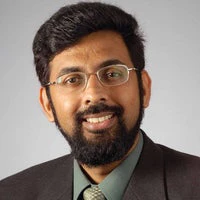KNOMAD has published a new Migration and the Law database, a global database of national legal frameworks affecting the integration of economic migrants and refugees. The database contains results of a survey of experts on integration laws across four dimensions: economic opportunity, housing, health and citizenship. A total of 20 indicators are used to measure integration policies as written in formal laws and regulations as of December 2016.
Answers to the underlying questions for these indicators are based on de facto laws; the extent to which laws are observed or implemented in practice is not taken into consideration in the current database.
The database contains two separate components for economic migrants and refugees. Preliminary findings indicate that in high-income OECD and Latin American and Caribbean countries, laws are more likely than in other country groups to affirm the rights of economic migrants and refugees to access labor markets, health systems, housing, and other areas of life and work. Most regions are relatively more accommodating of refugees than of economic migrants with respect to economic opportunities and access to health services. But most grant economic migrants greater housing rights than refugees. Though many conditions apply for both groups, it is typically easier for economic migrants to become permanent residents and citizens than it is for refugees. The relatively weaker indicator of integration of refugees in South Asia and East Asia and Pacific regions could be due to limited ratification of the 1951 Convention relating to the Status of Refugees and its 1967 Protocol.
Economic Opportunities. The Migration and the Law database finds that sampled economies impose a variety of restrictions or conditions on an economic migrant’s ability to work formally. Foreigners are often prevented from private sector jobs involving closely regulated or professional bodies, jobs that represent a part of national tradition and identity or are related to the management of human resources. However, in recent years, acute labor shortages have induced several countries to lift restrictions on the employment of foreigners in prohibited sectors. The database also alludes to three distinct patterns with regards to the employment rights of refugees. In the first case, national laws treat refugees on par with citizens, lifting employment-related restrictions applicable to economic migrants. The second pattern finds laws bestowing refugees the most favorable treatment provided to foreigners, subjecting them to more lenient requirements short of treating them on par on citizens. Finally, a third pattern is where national legislation fails to provide special protection for refugees, thereby compelling them to present themselves as migrant workers in order to enter formal employment market.
Housing. The Migration and the Law database reveals that national legal frameworks by and large allow economic migrants to rent or purchase property, though in many cases, migrants may be subjected to onerous conditions. For example, there may be restrictions on ownership of land so that foreigners are allowed to buy only (above ground) apartments. The situation for refugees is more complex – they may not always be able to rent or purchase property.
Health. The Migration and the Law database shows that most governments strive to legally provide both citizens and migrants with equal access to health care. However, migrants and refugees often confront additional barriers in accessing public health services. Migrants who are employed, pay taxes and contribute to social security or those with permanent residency tend to qualify for government health benefits on par with citizens; others may face obstacles. Unlike economic migrants, refugees can qualify for public healthcare programs based solely on their refugee status.
Political Integration. While permanent residency is a stepping stone towards citizenship, it often depends on migrants’ personal characteristics and whether they are deemed able to make a productive contribution to the host country (e.g., by being financially self-sufficient or having a specific skill/academic degree, good moral character, clean criminal record). The database reveals that some countries allow integration of only high-skilled migrants, but not of lower-skilled workers.
While all countries in the Migration and the Law database legally provide migrants with a pathway to citizenship, in some cases stringent conditions may render it virtually impossible. Citizenship may be reserved for migrants who belong to a specific religious or ethnic group, or those who have performed exemplary contributions to the host country. In cases where citizenship is an option for refugees, several countries have comparatively more lax requirements for them, relative to economic migrants.
This rich database can yield interesting analytical findings. For example, a tentative assignment of score (Yes=1, Conditionally=0.5, No=0) to each of the 20 indicators would yield an overall index which could then be compared and analyzed with other variables. For economic migrants, the overall index tends to be higher in countries where laws were enacted more recently. In other words, recent laws are more accommodating of economic migrants than those enacted prior to the 1980s (figure 1).
Figure 1: Economies with more recent immigration laws tend to score higher on the overall integration index for economic migrants

Source: Authors’ calculation using the Migration and the Law Database




Join the Conversation